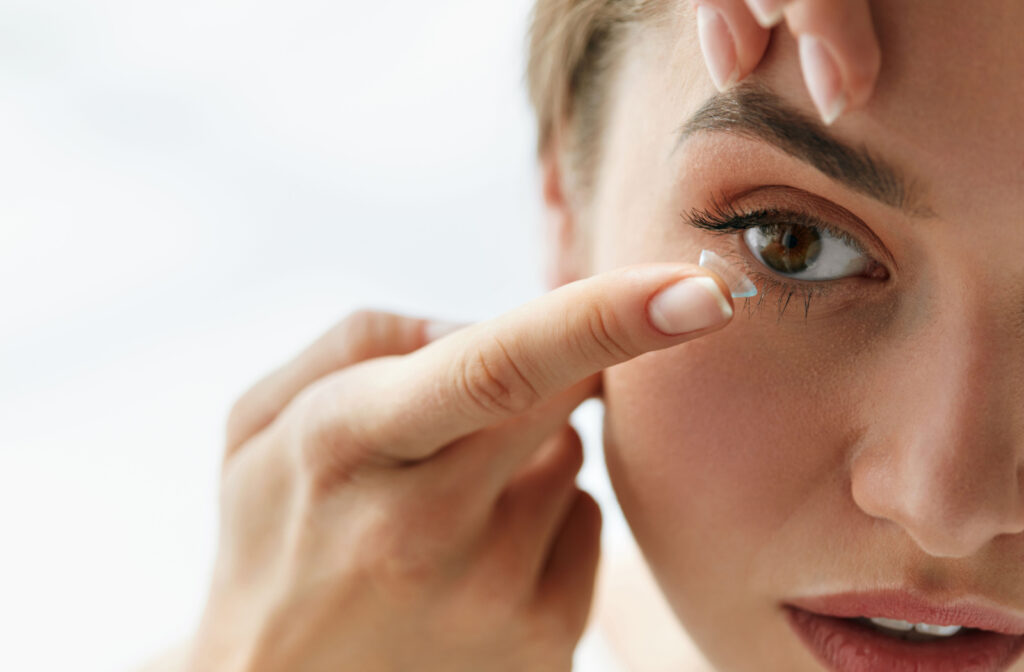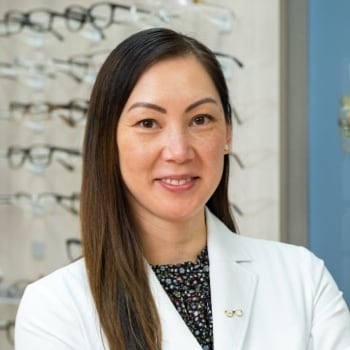Contact lenses have come a long way over the past few decades, transforming from uncomfortable eyewear to an essential accessory for millions worldwide. However, despite the many improvements, wearing contacts can still be problematic for some individuals, particularly those who experience dry eye. For people with dry eyes, contact lenses can cause discomfort, irritation, and even eye damage.
You can still find comfortable contact lenses if you have dry eyes—from low water content to daily disposables or specialty lenses, there have never been more choices for those with dry eyes. To find more comfortable contact lenses, visit your optometrist for an eye exam to update your prescription and get a contact lens fitting to discover the range of lens options.
How Can Contact Lenses Cause Dry Eye?
Contact lenses can cause dry eye because they disrupt the natural flow of tears, which protect the eye’s front surface and keep it moist. When tears are not distributed properly over the cornea, the eye becomes dry, leading to symptoms like:
- Burning or stinging
- Grittiness
- Sensitivity to light
- Blurry vision
- Watery eyes
Additionally, contact lenses can prevent the eye from getting enough oxygen, which can cause inflammation and further dryness.
What to Look for in Contact Lenses for Dry Eyes
Not all contact lenses are the same, and there are some features your optometrist may recommend to create a more comfortable wear experience.
Water Content
One of the most critical factors to consider is the water content of the contact lens. It sounds contradictory, but contacts with high water content can dry out more quickly. Despite being hydrating initially, the lenses will begin to pull water from your natural tears, leaving the ocular surface lacking lubrication.
Replacement Schedule
Disposing contact lenses on time is crucial, as old lenses can accumulate protein, bacteria, and other debris. This buildup can cause dry eyes to worsen and cause infections or corneal scratches.
Daily disposables are ideal if you suffer from dry eyes as they are single-use, and you use a fresh pair daily. If you prefer to use monthly lenses, be sure to follow the manufacturer’s replacement schedule strictly and care for your lenses as instructed by your optometrist.
Scleral Lenses
If you have severe dry eyes, scleral lenses can be beneficial. Scleral lenses are a type of rigid gas-permeable lens larger than regular contact lenses and are fitted to arch over the whole cornea. Instead of resting directly on the cornea, the diameter is larger to cover a portion of the whites of the eye.
These lenses keep the eyes hydrated by trapping tears between the lens and the eye, creating a moisture reservoir. This design prevents tears from evaporating, which can cause discomfort. Scleral lenses can also aid in vision correction if you have astigmatism or other vision problems.
Silicone Hydrogel Lenses
Silicone hydrogel lenses allow more oxygen flow to the cornea than other types of lenses. As a result, they offer more extended comfortable wear.
Dry Eye Treatment Options
Long-lasting treatments and simple remedies are available to soothe dry eye symptoms and support healthy eyes.
Lubricating Eye Drops
Regardless of the type of contacts you wear, lubricating eye drops can help alleviate discomfort and irritation caused by dry eyes. Opt for drops designed for contact lens wearers and those that mimic your natural tears’ chemical composition. Get personalized recommendations from your optometrist first.
Intense Pulsed Light (IPL) Treatment
In-office IPL treatment uses carefully calibrated light pulses to target meibomian gland dysfunction that causes most dry eye cases. When the oil-producing glands become blocked, your eyes struggle to create a healthy balance of tears.
With IPL, the device can melt the blockages and restore healthy oil production, decreasing dry eye symptoms.
Low-Level Light Therapy (LLLT)
LLLT is another form of light therapy that unblocks meibomian glands and stimulates the flow of healthy, fresh oil for your tears. This treatment can also be combined with other dry eye treatments, depending on the severity of your dry eye.
Radio Frequency Treatment
Using radio waves, the treatment can help release meibomian gland blockages, lessen inflammation, and boost oil production.

See Clearly with the Right Contact Lenses
If you’re dealing with dry eyes, finding the right contact lenses can be daunting. With the help of your optometrist in a contact lens exam and fitting, you can find the right features to keep your vision clear and comfortable.Schedule a visit at Eyes on Plainville to explore contact lens options, discuss dry eye therapies, and get an updated lens prescription with comprehensive eye care.





